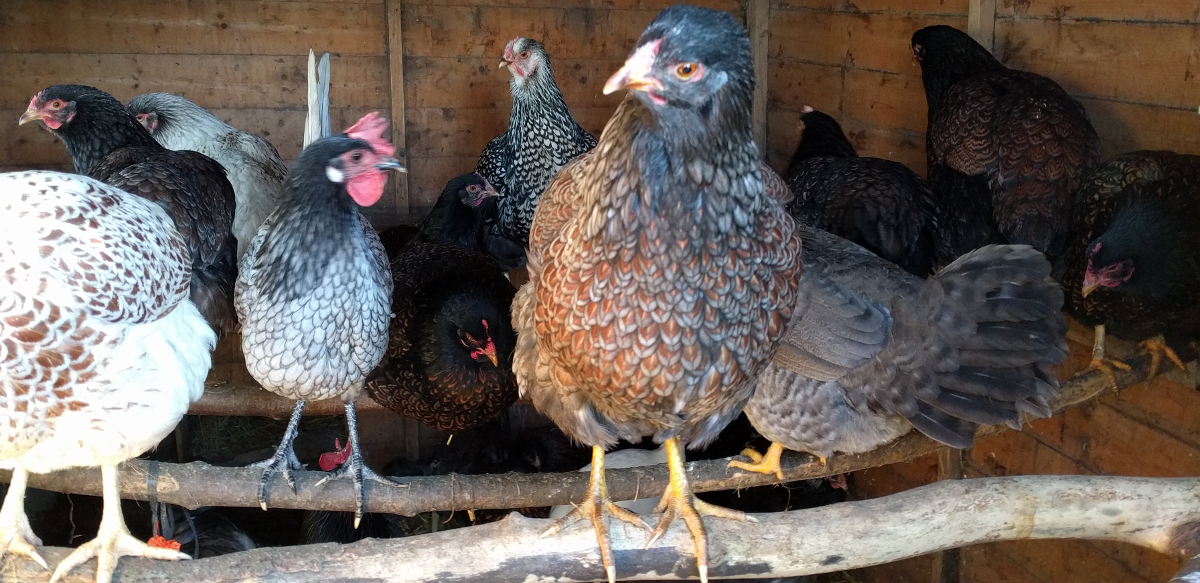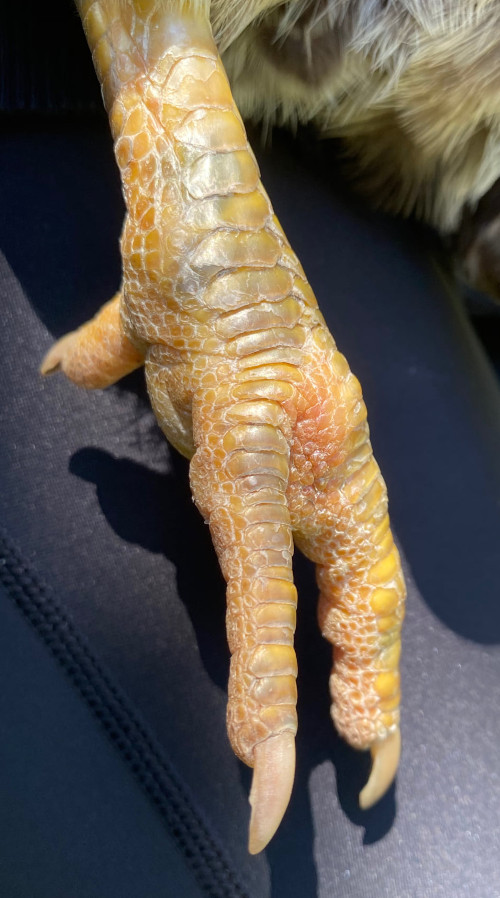Chicken keeping problems

Table of Contents
- What are the most common problems with chickens?
- Chicken health problems:
- Digestive problems with chickens:
- Reproductive problems in chickens:
- Egg issues:
- Malformations and skeletal problems in chickens:
- External – Dealing with the outside and extremities of your bird.
- Nervous system problems in chickens:
- Cardiovascular problems in chickens:
- Predators:
- Parasites:
- Injuries in chickens:
- Vermin:
- Bad behaviour in chickens:
- Losing Chickens:
Do not feel overwhelmed by the length of this article and the unending list of problems. It may be you never have to deal with any of these subjects. It pays to be vigilant and prepared.
Diagnosing sick chickens. or for sick chicks or young chickens.
Below is an overview of the pest, diseases and afflictions both common and rare found in poultry. Some conditions affect more than one part of the body. These have been placed in the section where the symptoms first become apparent.
What are the most common problems with chickens?
The most common illnesses and problems with chickens are:
- Red mite and parasitic infestations.
- Bumble foot and other foot and leg injuries.
- Coccidiosis is an intestinal infection endemic to poultry.
- Egg eating, bullying or other behavioural problems.
- Egg or egg production problems.
- Crop infection or impaction.
- Mareks disease or other viral infections.
- Mycolpasma or other bacterial infections.
Other articles for reference :
- <how to inspect poultry.>
- Best practice for keeping chickens in cities.
- water quality and hydration in the backyard and keeping chicken water clean.
- diagnosis flowchart - diagnosing a sick chicken.
- <how I look after my unwell chickens>
- Dictionary of the poultry terms and words .
Chicken health problems:
Respiratory problems and diseases.
Birds in general and poultry in particular have weak respiratory systems and can be easily overcome by their ailments.
Follow the links below to details pages about the conditions as well as treatments and preventative measures.
Mareks disease. Identify Mareks disease in chickens and what to do about it.
Newcastle disease. Signs, symptoms and treatment for Newcastle disease in chickens.
Bird Flu or Avian influenza seems to strike fear into the minds of chicken keepers the world over. Avian Influenza is an infectious virus that affects many species of birds, including domesticated fowl. There have been outbreaks around the World including here in the UK. There is a compulsory slaughter policy on all infected flocks including within a zone. It is spread mostly by wild birds and human movement.
Infectious Coryza and how to deal with it.
Mycoplasma . This is a common condition, birds can get ill or just become carriers. There are several types that affect poultry but Mycoplasma Gallisepticum (M.G) is the most common. There are several strains and some show different symptoms.
Infectious bronchitis or I.B is the most contagious poultry disease. It has similar symptoms to Mycoplasma. The main difference is the number of birds it affects. Mycoplasma tends to affect a few birds in the flock but IB spreads within a few days to the whole flock.
Aspergillosis, sometimes called brooder pneumonia because of the warm and often damp conditions in the brooding area. It is an infectious fungal disease and is difficult to treat with high death rates. The birds inhale the spores which begin to grow. Birds will be gasping for breath and those that live may never recover .
Fowl Pox is widespread and in a similar vein to the human variety it comes in two forms. It is a common disease in backyard chickens that have not been vaccinated. Although very young or weak birds may be lost most survive.
The lesions initially looks like a whitish blister and appear on the comb, wattles and other skin areas. This may be the only symptoms the bird shows. In rare cases lesions can be found on the body, legs and even sometimes the softer parts of the beak. The blisters develop into a dark scab and take about three weeks to heal and drop off.
Dealing with fowl pox in poultry.
Digestive problems with chickens:
See also the digestive system of the chickens. Chickens are one of the most studied farm animal and their food is one of the most regulated products on the market. Feeding mistakes are made even by experienced keepers.
Diarrhoea has many causes from illness, foods, heat exhaustion, parasites or pathogens.
How to diagnose and treat crop problems in chickens - https://cluckin.net/crop-problems-prevention-and-treatment.html - on this site - opens in a new window.
Pendulous crop. Common in older birds and ex battery hens that have had commercial diets only.
Sour crop. Infections or fermentation in the crop.
Impacted crop. A solid crop filled with long grasses or fibrous vegetable matter. Usually caused by insufficient grit in the diet but has other triggers.
Diagnosis and treatment of crop problems in chickens.
Reproductive problems in chickens:
See also the <reproductive system of a chicken>
Egg Yolk Peritonitis or EYP. The peritoneum (the lining of the abdomen) becomes inflamed due to an infection from bacteria. Peritonitis can occur after prolapse or when yolk goes into the abdominal cavity, instead of going down the oviduct and out in the normal way
Prolapse or bleeding vent. When the lower part of a hen’s oviduct turns inside out and is left hanging outside of her vent. This condition is most common in young hens that have started laying too soon but can be inherited in some pure breeds.
Suprelorin Implant For Chickens - The suprelorin implant was originally designed to induce temporary infertility in male dogs but strangely also stops chickens laying for anything up to six months. With my two implant girls it was a three month and two month respite from egg laying demands. It is therefore ideal for prolapses or
Egg Bound chickens or egg binding. Sometimes poultry can become egg bound when a large egg ‘gets stuck’ in the oviduct. The bird will usually keep visiting the nest box without being able to lay the egg and will keep straining. If the abdomen of the bird is examined, the egg can often be felt.
Infertility in chickens has a surprising number of causes.
Tumours. Surprisingly common in chickens despite their short lifespan and most common in the reproductive system.
Mushy chick disease, yolk sac infection and other chick ailments and causes of early death in young chickens - https://silkie.org/help-my-chicks-are-dying.html - opens in a new window.
How to sex baby chicks accurately.
Egg issues:
See also this article about the chickens egg.
Dealing with chickens that eat their own eggs.
For details on double yolkers, watery whites and 37 egg and shell problems.
Soft or missing shells. https://cluckin.net/why-are-my-chickens-laying-soft-or-thin-shelled-eggs.html
Malformations and skeletal problems in chickens:
<Angel wing>
Below: Lameness in chickens has many causes.

Mycoplasma Synovia bacteria. This Mycoplasma is here because it seems to infect the bone marrow. See Mycoplasma and how to deal with it.
Bent, broken or missing toes. https://cluckin.net/what-is-wrong-with-my-chickens-feet.html
<slipped tendons>
<malformed breastbones> only really a problem if you breed or show birds. Either genetic or by birds perching when they are two young.
External – Dealing with the outside and extremities of your bird.
Bumblefoot or pododermatitis is an infection or inflammation of the foot of the chicken. It is usually caused by a bacteria called Staphylococcus aureus. There are two causes of Bumblefoot. The first is a wound of the foot that allows the bacteria to gain entry. The other is the feet on moist bedding or muddy ground for extended periods.
Dust bathing is an essential for chickens. See here for how to make one and what to fill it with.
<fly strike>flies can be a real problem in summer.
<Dealing with spurs> As the males age they can get long spurs. Mostly they do no harm but sometimes need taking care off.
Frostbite or frozen comb. Only a problem if you live in an area that experiences sub zero temperatures. Easy to prevent and deal with.
Moulting Chickens get through a lot of feathers. They go through three partial and 1 complete moult before the mature. There after it is generally one a year although it may not be a complete loss of feathers. Some birds do end up looking oven ready almost overnight.
Broken nails are not common and are rarely a big or long lasting problem.
Broken toes. One of my flocks gets in with some horses and get their feet trodden on. This results in broken toes but chickens seem relatively immune to foot injuries
<wounds> Dealing with everything from scratches to the aftermath of fox attacks.
We need to talk about chickens with dirty bottoms.
<your chickens are fat> Overweight hens are rare. Free range is best.
Nervous system problems in chickens:
Mercifully a relatively short list. Torticollis or twisted neck a symptom of other conditions. Other diseases may show nervous symptoms.
Marek’s disease is a killer in chickens.
<toxoplasmosis>
<Botulism>
Blindness and other eye problems in chickens.
Cardiovascular problems in chickens:
Problems with the heart and circulatory system often show up in the comb. The most common is heart failure which can be acute as in a heart attack or gradual with age. The end result is the same.
Avian Leukosis - A thankfully rare virus causing tumours in chicken flocks. Avian leukosis belongs to the retroviruses.
Predators:
Where you live effects how you deal with predators. Here is the United Kingdom we are lucky with the predators I have to contend with.
Predators can aerial as well as ground based. Sparrow hawks will take chicks up to 12 weeks old as well as bantams. Kites and eagles will take full grown chickens.
I have separated foxes into urban and countryside as they are quite different beasts.
Parasites:
Using diatomaceous earth for poultry, how to and doses.
The dreaded red mite - How to deal with red mite in the coop.
Chicken mites. There are several species of mite found on chickens.
Injuries in chickens:
Minor injuries are quite common in chickens.
Whats wrong with my chickens feet?
Vermin:
Dealing with rats and mice is a perennial problem for chicken keepers. The best approach is deprive them of the food and shelter they seek and at the same time trap or kill them in more than one way.
Bad behaviour in chickens:
Aggressive roosters. Apart from broody hens , bad tempered hens are a rarity but not unknown. I have one called nipper but that is about the extent of her aggressive tendencies. Cockerels on the other hand are a different story. There are some treatments for the grumpier amongst them.
Dealing with fighting in the flock among cockerel or hens.
Perching problems. Common with Ex battery hens or birds that have not been raised properly. Birds should perch both to rest during the day and to sleep at night. Issues with perching cause mucky bottoms and other problems. For everything you need to know about the perch and roosting - https://cluckin.net/the-lowdown-on-roosts-roosting-and-perches.html
Sleeping in nest boxes is common with ex-battery rescue hens. This is unwelcome just because of the mess it makes. See this on nesting boxes and how to train chickens to use them properly.
Losing Chickens:
Dealing with loss and death. Chickens do not live forever. Some people reckon chickens get sad and feel loss when their flock mates die.
Identify the causes of sudden death in chickens , How to know if your chickens are dying and
What to after chickens have passed away.
Escaped chickens or lost chickens.
How to stop your chickens from getting stolen.
